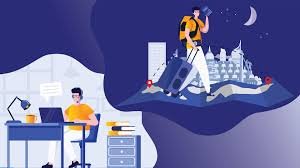How AI-Powered Personalized Learning Platforms Are Quietly Redefining Education
In the not-so-distant past, learning meant classrooms filled with identical textbooks, lectures delivered to rows of students, and assessments that rarely told the full story of a learner’s progress. Everyone followed the same path—regardless of how they learned best. That model has started to shift, and artificial intelligence is at the center of that change.
Today, personalized learning powered by AI is helping reshape education. Quietly, behind the scenes, algorithms are working to better understand each student’s needs, offering a learning experience that adapts like a tutor might—only faster and always available.

The Move Away from Uniform Learning
Traditional systems have always relied on a one-size-fits-all structure. Whether a student was bored or lost, the pace stayed the same. That lack of flexibility made it hard for many to keep up or feel seen. But AI has introduced something different: adaptability.
These platforms track everything from how long a learner spends on a topic to what kinds of questions they miss. Using that data, they adjust the lessons, offer more practice in weak areas, and skip redundant topics. It’s like having a guide that watches how you learn and quietly fine-tunes the journey in real time.
Where It’s Already Working
This isn’t theory anymore—it’s happening. Apps like Khan Academy, Duolingo, and Coursera use AI every day to refine the user experience. Duolingo, for example, gets smarter as you use it, spotting weak spots and returning to them with fresh examples until you’re ready to move on.
In schools, platforms like DreamBox and Smart Sparrow help educators manage large classrooms without leaving students behind. These tools generate insights that make it easier for teachers to know who’s struggling, who’s ahead, and what each student might need next.
Why It Matters
The biggest strength of AI-based learning tools lies in how personal they can become. Students often feel more in control when their learning matches their pace. There’s less anxiety. More confidence. It doesn’t matter whether someone learns best through reading, watching, or doing—these systems can adapt.
Students with learning challenges benefit even more. Someone with dyslexia may need content delivered with audio. Others might need shorter, more interactive tasks to stay focused. With AI, learning doesn’t have to feel like trying to squeeze into the wrong-sized shoe anymore.
The feedback is fast too. Instead of waiting for test results, students get corrections right away. They can see where they went wrong and how to improve—without delay.
It’s Not Perfect
Despite the promise, there are downsides. Privacy concerns come up often. These systems collect a lot of personal data, and how that data is stored or used isn’t always clear. Over-reliance on AI can also strip education of its human core. Connection with a teacher—their encouragement, their stories, even their tone—can’t be replaced by a screen.
There’s also a risk of making things worse for those who already struggle with access. Students in underfunded schools or homes without strong internet may get left behind if AI tools become the new normal. So while these tools can level the field, they can also deepen the gap—unless we’re careful.
Looking Ahead
Instead of replacing teachers, AI could shift their roles. They might act more as mentors and guides, stepping in when the system flags something or a student asks for help. Assignments might change too. Rather than identical worksheets, each student could get questions that match their needs that day.
In work environments, these systems are helping train employees. They offer targeted lessons for skills gaps, onboarding, and certifications. It’s quicker, more cost-effective, and often easier for adults juggling busy schedules.
Keeping the Human Touch
What matters most is that the technology stays people-focused. Learning isn’t only about content. It’s about emotion—curiosity, frustration, confidence. The best AI tools won’t just track answers. They’ll begin to understand how a learner feels, too. Some already experiment with tracking typing speed or eye movement to guess if a student is bored or confused.
But even the smartest AI can’t match the spark of a great teacher who spots a struggle and steps in with kindness and encouragement.




